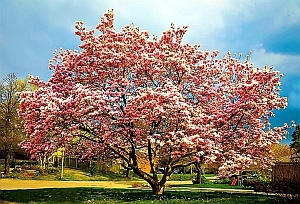 Interesting Facts – Life as we know it today is less the result of a steady evolutionary flow than a series of cataclysmic fits and starts.
Interesting Facts – Life as we know it today is less the result of a steady evolutionary flow than a series of cataclysmic fits and starts.
To date, the Earth has experienced five mass extinctions, a variety of ice ages, and other climatic changes that have had huge impacts on plant and animal life, often wiping the terrestrial slate clean. However, a few incredible survivors live among us — including magnolias.
Named for the 17th-century French botanist Pierre Magnol, the history of these trees far surpasses the ancien régime. In fact, it’s estimated that magnolias first sprouted on Earth 95 million years ago — smack dab in the middle of the Cretaceous Period. That’s about 27 million years before Tyrannosaurus rex roamed the Earth.
Back here in the Holocene (the current geological epoch), the magnolia family’s native ranges can be found in East and Southeast Asia and the southern U.S., as well as Mexico, northern South America, and the Caribbean. Although a modern favorite among plant lovers, magnolias still sport evidence of their ancient upbringing.
Because they are so old, they evolved to be pollinated by beetles and flies instead of bees, butterflies, or moths. That’s because back in the Cretaceous, those other pollinators didn’t exist yet.
Magnolias have tough carpels (the female parts of the flower) to protect themselves from a beetle’s less-than-graceful mandibles, and invest more energy in producing showy, nectar-filled, sweet-smelling flowers in an effort to attract these insects. The beautiful magnolia tree and the flightless beetle may seem like an odd couple, but it’s a relationship that has worked since the Mesozoic.
SF Source Interesting Facts Jun 2023
